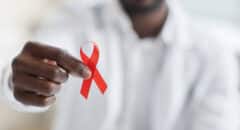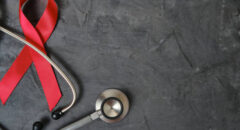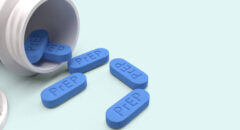We need to get more Black people tested for HIV. Period. Testing is critical for prevention of HIV in Black communities, particularly for those who are sexually active and those at high risk of contracting HIV. But, with so many tests available, how do you know which option is best for you?
Below is a breakdown of available tests from Aids.gov:
Antibody Screening Test (in the Lab)
The antibody screening test (or the immunoassay) is the most common HIV test. It doesn’t test for the virus directly and instead, looks to see how much antibodies your body produces to fight against HIV.
What to Consider: Even though the test can be done on blood or oral fluids, it’s most effective on blood. Also, oral fluids don’t include saliva.
MUST READ: Dallas Beauty Queen Wins Against HIV
OraQuick In-Home HIV Test
The OraQuick In-Home HIV Test gives you results right at home. You swab your mouth for an oral sample and then test it yourself. You can have results within 20 minutes.
What to Consider: A follow-up test is required if you test positive, and one in 12 people may get a false negative.
Rapid Test
Just like its name suggests, the rapid test provides results in 30 minutes or less. It’s also an immunoassay, which tests for antibodies.
What to Consider: Although the rapid test is a viable option, a lab test performed on blood may detect infection more quickly.
Antibodies and Antigen Test
Tests that look for both the antibodies and a part of the virus (antigen) are becoming more popular. They can detect HIV three weeks after exposure, but can test blood only.
What to Consider: These tests are not the go-to used at all testing sites. So, if you think that you’ve been recently exposed, let the test site know and request it.
MUST READ: HIV/AIDS: 6 Ways To Protect Yourself Beyond Condoms
Home Access HIV-1 Test System
The Home Access HIV-1 Test System is a quick and easy alternative to a testing center. You use the at-home collection kit to prick your finger for a blood sample. After sending it to a lab, you can get anonymous results as early as one day after.
What to Consider: At-home blood tests do not detect the virus as early as most blood tests that take samples from the vein, but results still come quicker than tests using oral samples.
RNA Test
RNA tests can detect HIV in 10 days because it tests for the actual virus and not the antibodies.
What to Consider: These tests are more expensive than antibody tests and aren’t usually used as screening tests. It is likely, however, that you take one as a follow-up to one of the less expensive tests.
To learn more about National Black HIV/AIDS Awareness Day, visit nationalblackaidsday.org. To locate a testing center near you, visit locator.aids.gov.










